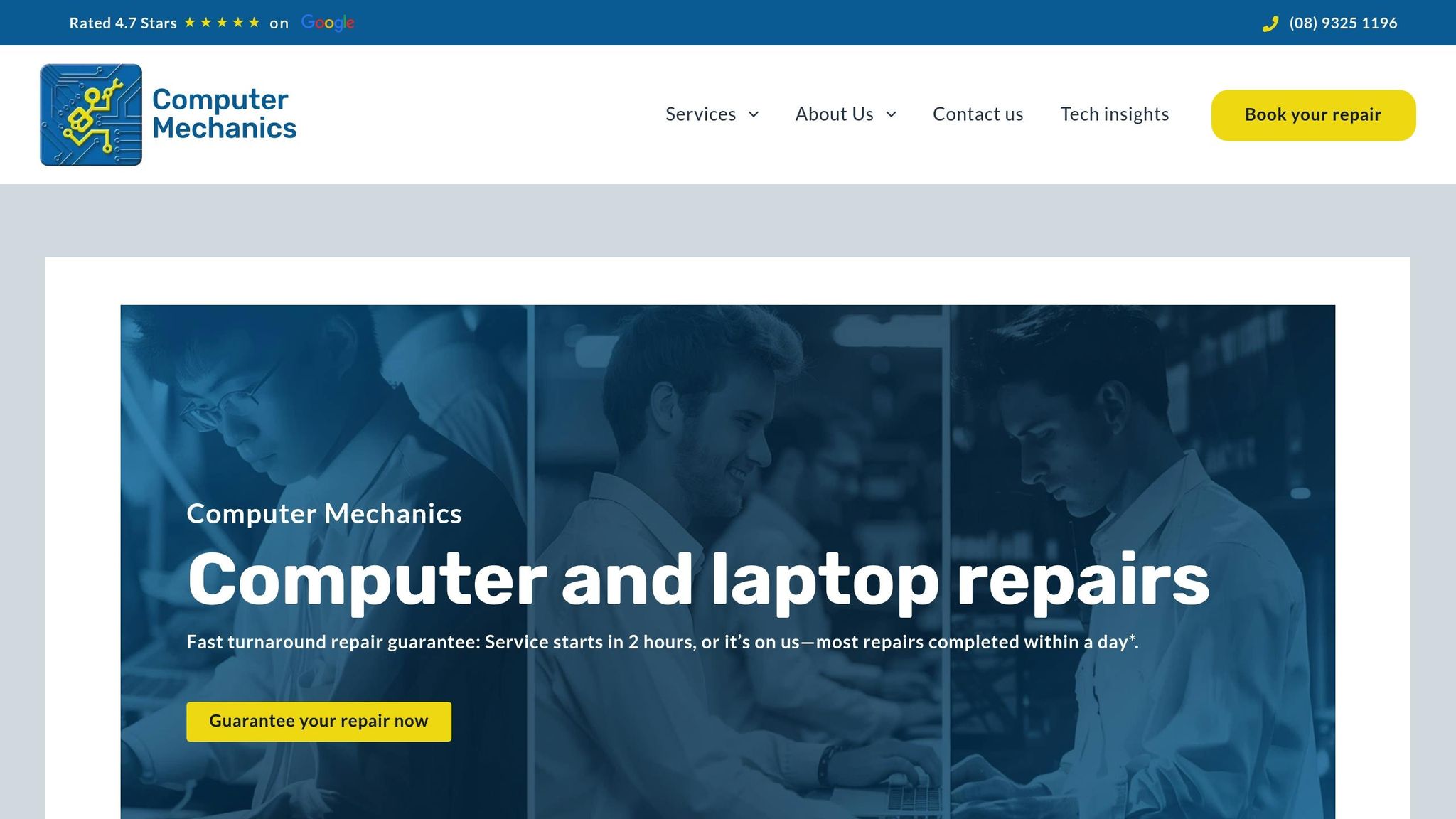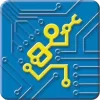Keeping old hardware running smoothly can be tricky, but updating drivers is the key. Here’s a quick guide to ensure your older devices stay functional and secure:
- Why Update Drivers? Prevent system crashes, improve performance, and enhance security.
- Challenges: Limited manufacturer support, compatibility issues, and outdated documentation can make updates tough.
- How to Update:
- Use Windows Update for automatic updates.
- Try Device Manager to search for or manually install drivers.
- Download directly from the manufacturer’s website.
- Install legacy drivers via Device Manager’s “Add Legacy Hardware” option.
- Fix Common Issues: Use compatibility mode, generic drivers, or explore Linux alternatives if no updates are available.
Tip: Always back up your system before making changes to avoid data loss. If problems persist, consider professional help to resolve conflicts or ensure proper installation.
Read on for detailed instructions and troubleshooting tips.
4 Ways to Update Old Hardware Drivers
1. Update Through Windows Update
Windows Update can automatically handle many driver updates, though it might not always have the latest versions for older devices. Here’s how to use it:
- Open Windows Settings.
- Go to Windows Update.
- Click Check for updates.
- Navigate to Advanced options.
- Turn on Receive updates for other Microsoft products.
2. Use Device Manager
You can update drivers directly from the Device Manager. Here’s the process:
- Right-click the Start button and select Device Manager.
- Find the device you want to update in the list.
- Right-click the device and choose Update driver.
- Select Search automatically for drivers.
If you have the driver file from the manufacturer, you can choose Browse my computer for drivers instead.
3. Download Drivers from the Manufacturer
For more control, you can download drivers directly from the manufacturer’s website. Here’s what to do:
- Identify your hardware’s model number using tools like dxdiag.
- Visit the official Support or Downloads section of the manufacturer’s site.
- Download the driver that matches your operating system and system architecture.
4. Install Legacy Hardware Drivers
This method works for older hardware that Windows doesn’t recognize automatically. Follow these steps:
- Open Device Manager.
- Click Action in the top menu.
- Select Add Legacy Hardware.
- Follow the wizard instructions.
- Choose from standard device types or use Have Disk to install drivers provided by the manufacturer.
Tip: Always create a system restore point before installing or updating drivers to safeguard your system.
How To Update Drivers For Windows 10
Fixing Common Driver Problems
Sometimes, updating your drivers can lead to unexpected issues. Here’s how to tackle common problems effectively.
Fixing Driver Compatibility Errors
Compatibility problems often happen due to mismatched system architecture or outdated BIOS settings. Here’s how you can fix them:
- Access your BIOS by pressing F2 or Del during startup.
- Enable options like “Legacy Support” or “Compatibility Mode”.
- Save the changes and restart your computer.
For Windows Compatibility Mode, follow these steps:
Right-click the driver installation file, select Properties, go to the Compatibility tab, enable compatibility mode, and choose an earlier version of Windows.
What to Do When Drivers Aren’t Available
If the manufacturer no longer supports your hardware, try these options:
- Use Generic Drivers: Windows often includes basic drivers to restore essential functions.
- Consider Alternative Operating Systems: Linux distributions like Ubuntu LTS, Linux Mint, or Debian Stable offer broader support for older hardware.
- Check Community Resources: Look into forums, open-source driver projects, or community-maintained repositories for unofficial drivers tailored to legacy devices.
Resolving Driver Conflicts
Driver conflicts can disrupt your system, but these steps can help restore order. Before starting, make sure you’ve backed up your system to avoid further complications.
- Safe Mode Troubleshooting:
- Press F8 during startup to enter Safe Mode.
- Open Device Manager and uninstall devices marked with yellow exclamation points.
- Restart your computer and reinstall the correct drivers.
- Roll Back Drivers:
- Open Device Manager.
- Double-click the device causing issues.
- Go to the Driver tab and click Roll Back Driver.
If the problem persists, consider reaching out to a professional computer repair service like at Computer Mechanics Perth, who specialize in resolving hardware and driver conflicts while ensuring your system stays stable.
sbb-itb-078dd21
Safety Tips for Driver Updates
Updating drivers for older hardware needs careful attention to avoid system problems. Follow these steps to ensure the process goes smoothly while keeping your data and system stable.
Create System Backups
Before updating any drivers, make sure to back up your data. Follow these Windows backup methods to secure your files efficiently:
- Create a System Restore Point
- Open Windows System Protection
- Select your system drive
- Click “Create”, name the restore point, and wait for confirmation
- Back Up Important Files
- Save critical documents, settings, and driver configurations
Encrypted backups help maintain system performance during updates. Services like those from Computer Mechanics Perth highlight the importance of proper data backups and these precautions to protect your data and keep your system reliable [1].
After backing up your data, confirm your system meets the update’s requirements.
Check System Requirements
Backing up is step one, but ensuring your system is compatible is just as important. Check these key details:
- Operating System Version: Know your exact Windows build number.
- System Architecture: Confirm whether your system is 32-bit or 64-bit.
- Hardware Specifications: Identify your device model and current driver version.
| Compatibility Check | Why It Matters | How to Verify |
|---|---|---|
| OS Version | Ensures driver support | Go to Settings > System > About |
| System Type | Prevents architecture mismatch | Open System Information > System Summary |
| Hardware Model | Matches the correct driver | Use Device Manager > Device Properties |
Use Official Sources Only
Using unofficial driver sources can lead to malware or system instability. Stick to trusted options:
- Manufacturer Websites
Visit your hardware manufacturer’s official support page. Enter your device model to find the right driver. - Windows Update
Use Microsoft’s built-in update service for WHQL-certified drivers that have passed compatibility testing. - Device Support Portals
Many major manufacturers offer dedicated driver databases for their products.
If you’re unsure about driver authenticity or face any issues during installation, professional help is a good option. Computer Mechanics Perth provides expert data transfer and backup services, prioritizing data privacy and security [1].
When to Get Expert Help
While updating drivers for older hardware is often simple, there are situations where professional help is essential.
Warning Signs That Need Professional Attention
- System Instability
Frequent crashes, blue screens, or hardware not being detected are clear indicators of deeper issues. In some cases, hardware upgrades might also be the best option. - Update Failures
Persistent errors during installation, automatic rollbacks in Windows, or unresolved error codes signal the need for expert troubleshooting. - Hardware Performance Problems
Noticeable slowdowns, strange noises from components, or visual glitches on your display may point to hardware or driver-related issues.
| Warning Sign | Risk Level | Action Needed |
|---|---|---|
| System Crashes | High | Seek immediate professional help |
| Failed Updates | Medium | Consult a technician |
| Performance Problems | Medium to High | Schedule a diagnostic check |
If you encounter any of these warning signs, reaching out to a professional can help prevent further complications.
Services Offered by Computer Mechanics Perth

Professional support ensures that your older hardware remains dependable. At Computer Mechanics Perth, technicians specialize in resolving driver and hardware challenges efficiently. Their services include:
- Driver Management
They handle compatibility testing, support for older hardware, and system adjustments to improve performance. - Hardware Diagnostics
Experts provide thorough evaluations, performance checks, and recommendations for upgrades or replacements.
“We make your technology problems disappear, ensuring you can get back to what matters most.”
- Computer Mechanics Perth
Most repairs are completed within 24 hours, reducing downtime and getting your system back up and running quickly.
When to Contact Them Right Away:
- If driver installations fail repeatedly
- During frequent system crashes
- When facing hardware compatibility issues
- Before making system changes that could risk losing data
Computer Mechanics Perth goes beyond basic repairs, offering thorough hardware solutions. Their team evaluates whether your older system needs updates, replacements, or alternative fixes to keep it running smoothly and efficiently.
Conclusion
Updating drivers for older hardware doesn’t have to be complicated. Tools like Windows Update and Device Manager make it easier for most users to handle legacy driver updates. These methods, combined with the steps outlined earlier, offer reliable solutions for many scenarios.
Always ensure you’re downloading drivers directly from official manufacturer websites to keep your system secure. As Computer Mechanics Perth states, “We know how important your computer is to your daily life and business. That’s why we aim to provide fast and reliable repairs” [1]. Their quick 24-48 hour service minimizes downtime and keeps things running smoothly.
If automatic methods don’t work, professional help can make all the difference. Here’s a quick guide to essential steps:
| Action | Timing | Importance |
|---|---|---|
| System Backup | Before any update | Critical |
| Compatibility Check | Prior to installation | High |
| Driver Download | From manufacturer sites | Essential |
| Professional Help | When issues persist | Recommended |
Some older devices may require expert attention. If you encounter repeated errors or system instability, consulting a professional can help avoid further issues.
“Excellent service, recommended by many.” – Computer Mechanics Perth Customer [1]

